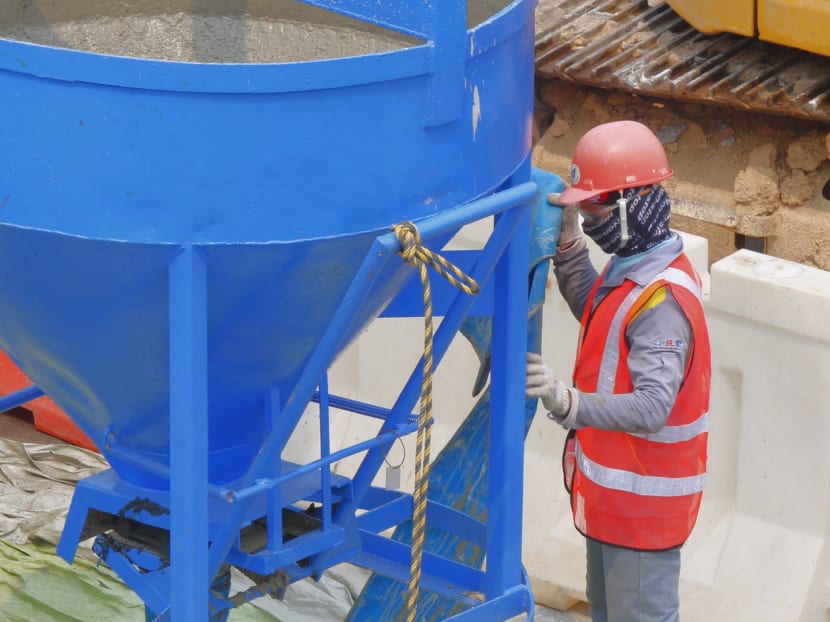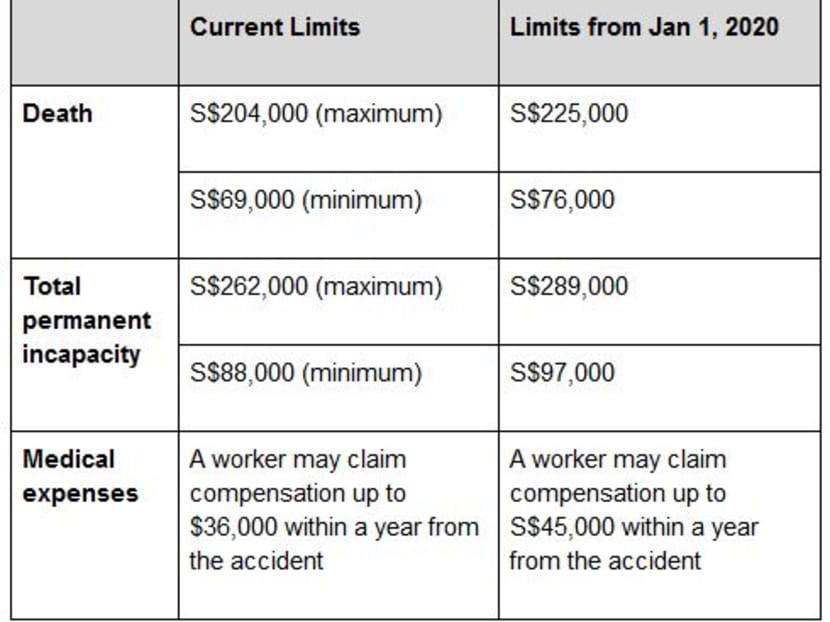Higher and faster payouts for employees who are injured during the course of work
SINGAPORE — Almost all Singaporean and foreign workers who were either injured or have died during the course of their work will have their claims processed faster. They will also be allowed to switch to another doctor without requiring their employer’s consent.

There have been cases where some employees who suffered injuries were not aware or were misled by their employers on the application procedures and therefore did not submit their claims within the one-year time limit.
SINGAPORE — Almost all Singaporean and foreign workers who were either injured or have died during the course of their work will have their claims processed faster. They will also be allowed to switch to another doctor without requiring their employer’s consent.
These will apply to all manual and professional workers, except for those in the uniformed services such as the army or police, and foreign domestic workers.
These and other changes were made to the Work Injury Compensation Act (Wica), which were passed in Parliament on Tuesday (Sept 3). They will take effect from Sept 1 next year, so as to allow time for employers and insurers to adjust, Minister of State for Manpower Zaqy Mohamad said.
HOW WILL CHANGES AFFECT WORKERS?
Current: Compensation is awarded only after a doctor makes a permanent incapacity assessment.
New: Compensation can be made based on the prevailing state of capacity, known as “current capacity”, six months after the accident. More complex injuries may still be assessed at a later date.
Why the change: Some injured workers receive their compensation after several months. This causes uncertainty, especially for foreign workers, who are unable to return home. Employers, too, incur higher upkeep and maintenance expenses.
Current: An injured worker or his representative needs to submit a form to kickstart a claim.
New: There will be no need to submit claims. The process starts once the Ministry of Manpower (MOM) or the insurer is notified of accidents.
Why the change: Some employees are not aware or were misled by their employers on the application procedures and therefore did not submit their claims within the one-year time limit.
Current: Documentary evidence is required to compute the average monthly earnings for compensation. If payslips are not available, MOM can compute compensation based on a co-worker’s average monthly earnings.
New: MOM can order compensation based on a multiple of the affected worker’s basic monthly salary, which will be set at the higher end of the industry norm, if documentary evidence is not available.
Why the change: Lack of documentary evidence has resulted in disputes over a worker’s salary.
Current: Workers are usually assessed on the severity of their injuries by a doctor engaged by their employer. A worker needs his employer’s consent to change doctor.
New: If an employer’s doctor is suspected to provide inadequate quality of care or unfair incapacity assessment, MOM has the power to allow an injured worker to switch doctors without his employer’s consent.
Why the change: Some employers have been suspected to influence doctors’ assessments.
Current: Compensation is only for injured workers who have been given medical leave
New: Workers who have been put on light duties due to their injuries have to be compensated as well. Employers need to compensate any shortfall in their salaries if there is a difference in their salary while doing light duties.
Why the change: To ensure that injured workers on light duties are not worse off than those on medical leave.
Compensation limits will also be increased:

WHAT WILL CHANGE FOR EMPLOYERS?
Current: Employers have to report workplace accidents if it results in death, medical leave of at least four days or hospitalisation of at least 24 hours.
New: Employers are required to report to MOM all work-related medical leave or employees who are moved to light duties.
Why the change: Some employers have avoided reporting work accidents or have tried to influence doctors to prescribe less medical leave.
Current: Employers need to buy insurance for all manual workers and non-manual workers in factories who earn up to S$1,600 a month.
New: Employers need to buy insurance for all non-manual employees regardless of whether they work in factories or not. The salary threshold will also increase to S$2,100 by April 2020 and S$2,600 by April 2021.
Why the change: To keep up with wage growth. As a result, 300,000 more workers will be covered by insurance although MOM noted that the vast majority is already insured by their employers.
Current: Employers have no recourse if they paid out compensation due to an error or a claim based on false information.
New: MOM can order a claimant to refund the employer.
Why the change: Recourse for employers hit with fraudulent claims.
HOW WILL CHANGES AFFECT INSURERS?
Current: Any insurer licensed by the Monetary Authority of Singapore (MAS) can sell Work Injury Compensation policies.
New: A new licensing regime by MOM means that only insurers licensed by the ministry can sell such policies. MOM will also come up with a standard set of terms and conditions for these policies. Insurers can add on other endorsements beyond the standard policy.
Why the change: Some employers have found that they are unable to claim through their insurers despite having bought insurance, due to policy exclusions.
Current: Insurers will process claims for temporary incapacity cases while MOM processes claims for fatal injuries and permanent incapacity cases.
New: MOM-licensed insurers will process all workplace injury claims. MOM will set out guidelines so that insurers do not reject admissible claims. Insurers also do not have the discretion in setting the compensation amount because it will be calculated based on a fixed formula.
Why the change: Claims processing under the current system can be delayed as insurers have to do duplicative work verifying documents and evidence already obtained by MOM.
Current: Insurers have no visibility of clients' past claims record, and premiums are set based on information provided by the company.
New: Insurers will have to share policy and claims information to MOM, which MOM will then share with other insurers.
Why the change: With more data, insurers will be able to price premiums more accurately based on companies’ safety records, thereby rewarding safer companies.








